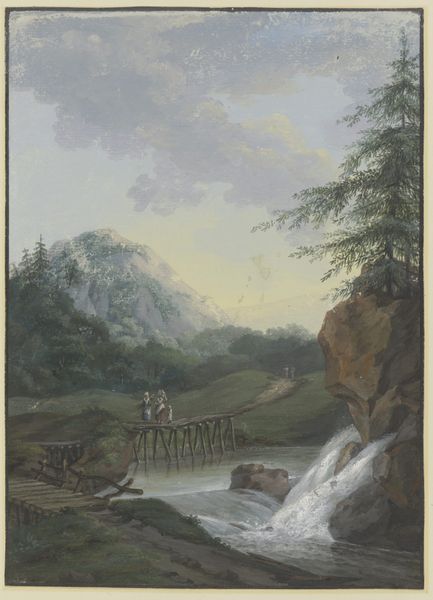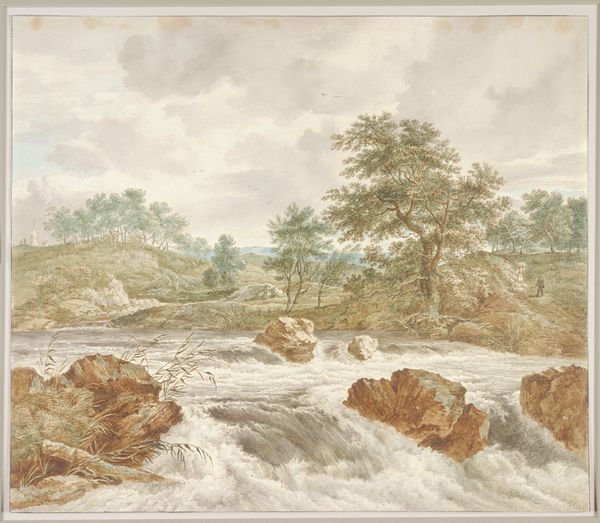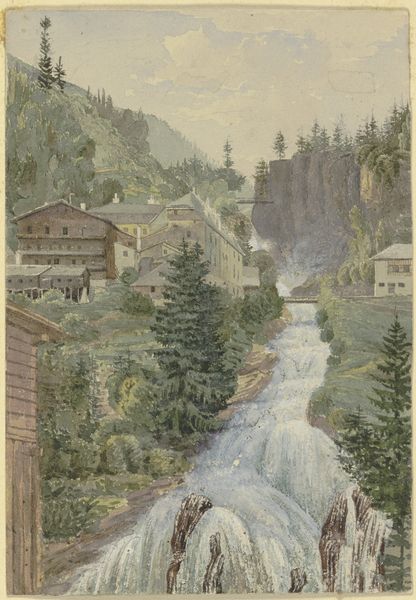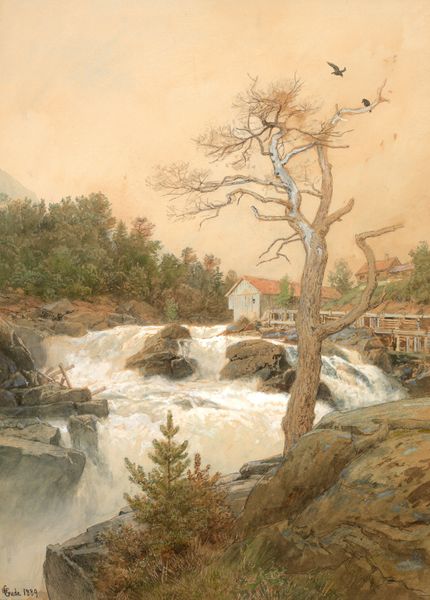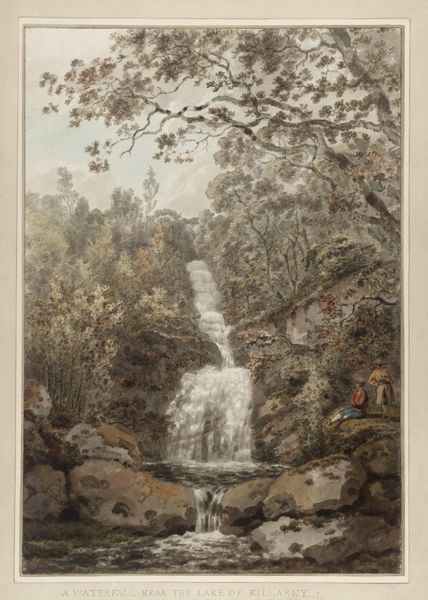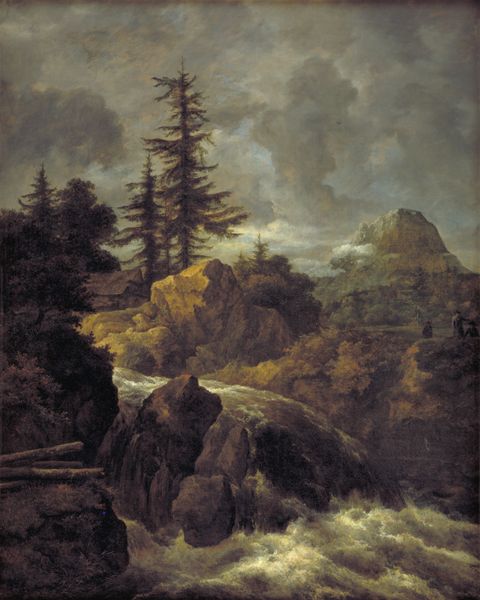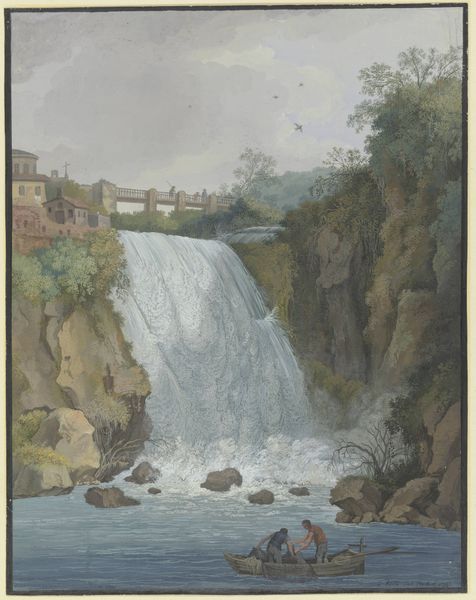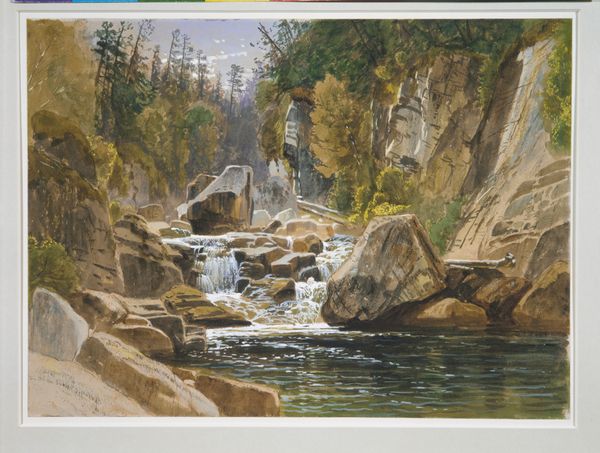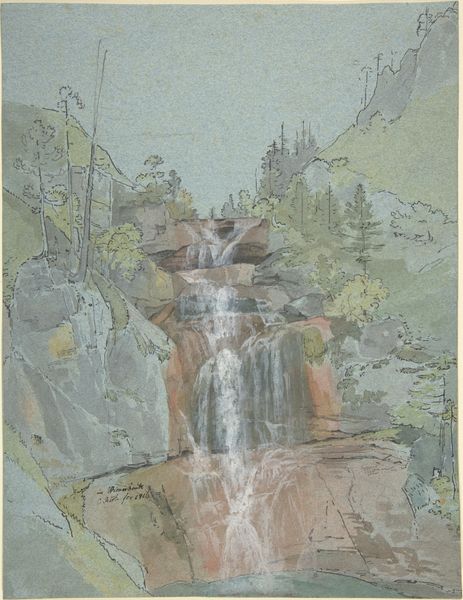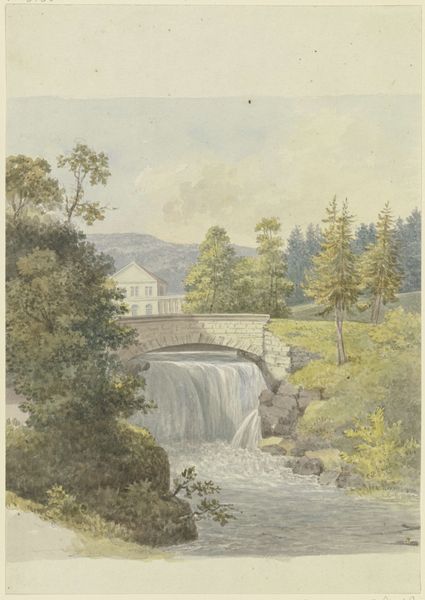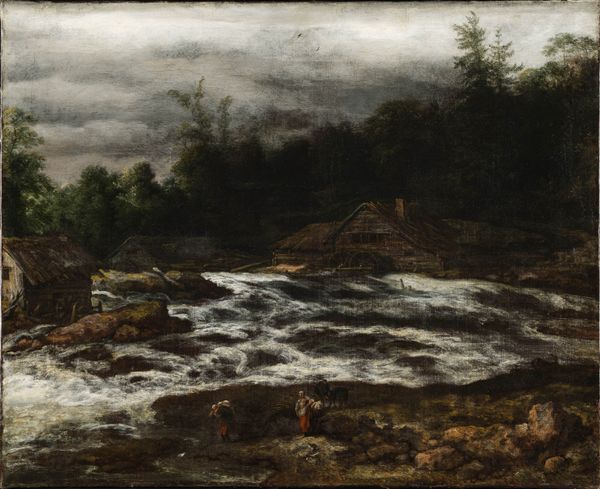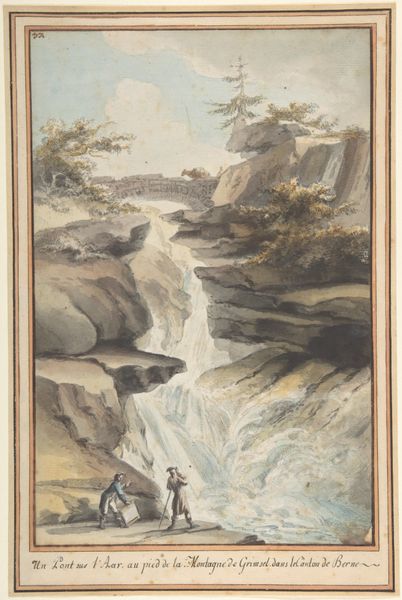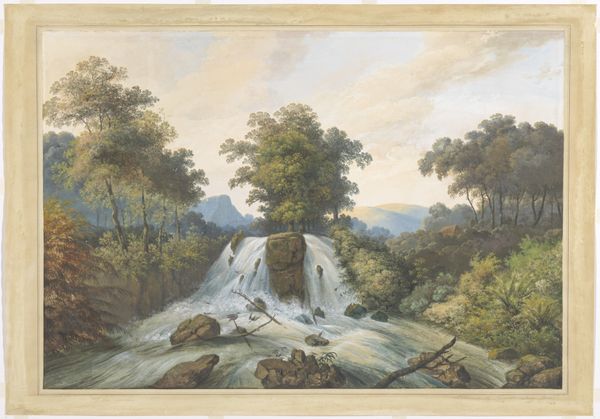
Wasserfall im Gebirge, am Ufer und im Hintergrund Nadelhölzer
0:00
0:00
drawing, plein-air, paper, watercolor
#
drawing
#
toned paper
#
16_19th-century
#
plein-air
#
landscape
#
paper
#
oil painting
#
watercolor
#
coloured pencil
#
romanticism
#
watercolour illustration
#
watercolor
Copyright: Public Domain
Editor: This watercolor and pencil drawing is called *Wasserfall im Gebirge, am Ufer und im Hintergrund Nadelhölzer* - or Waterfall in the Mountains, on the Bank and in the Background Conifers – by Johann David Passavant. It seems to capture the sublimity of nature. How would you interpret this work? Curator: Look closely at how Passavant renders the waterfall's dynamism against the backdrop of evergreens. Notice the contrast, for instance, between the solid permanence of the rocks, almost monuments, amidst the fleeting quality of water and clouds. What emotional impact does that contrast have? Editor: It makes me think about time, the way some things last and others are always changing. Is that connected to something specific about the Romantic era? Curator: Absolutely. Think of the waterfall as a symbol of untamed, powerful, ever-changing nature, which inspires both awe and a sense of vulnerability. Consider also the prevalence of water imagery throughout history in folklore and mythology. Water has always been both a destructive force and a life-giving one, representing purification, regeneration, and the unconscious. What cultural meanings resonate most for you when you observe the movement depicted here? Editor: I see both chaos and beauty in the rushing water, which does seem like the core tension of Romanticism. The idea of being overwhelmed, but also finding something profound in that experience. Curator: Exactly! And how the artist uses the natural landscape – a traditional cultural touchstone of Romanticism – to express psychological states or perhaps the relationship between humanity and the natural world. Perhaps nature isn't separate from us but a reflection of us. Editor: That's such a cool point! Seeing the waterfall as a mirror reflecting the viewers place in time is new to me. I will be looking at more Romanticism! Curator: As will I. Every viewing unveils new facets within the symbol.
Comments
No comments
Be the first to comment and join the conversation on the ultimate creative platform.

